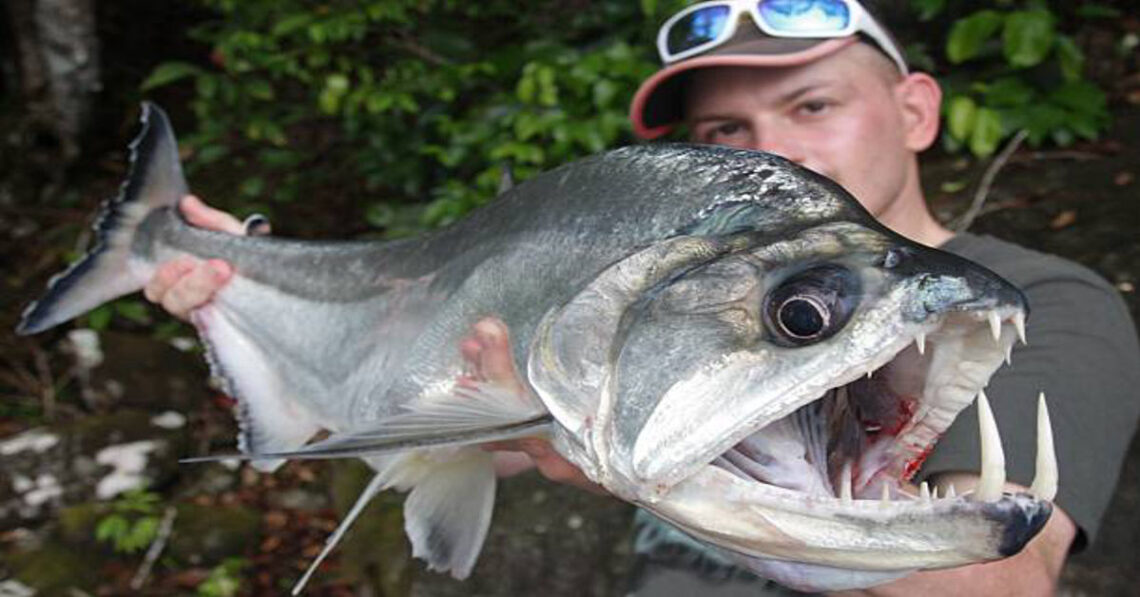Among the many captivating fish species found in tropical waters, few are as instantly recognizable or as fascinating as the roosterfish. Known for its dramatic dorsal fin that resembles the crest of a rooster, this species commands admiration among anglers, divers, and marine biologists alike. Its combination of power, speed, and distinctive appearance makes it one of the most sought-after game fish in the eastern Pacific Ocean.
But the roosterfish is much more than a prized catch—it’s an essential part of coastal ecosystems, a unique evolutionary design, and a symbol of the balance between marine life and human fascination. In this in-depth article, we will explore the roosterfish (Nematistius pectoralis) from every angle: its biology, natural behavior, environment, and role in sport fishing and conservation.
1. Overview and Scientific Classification
The roosterfish is a marine species belonging to the family Nematistiidae. It is the only species in its genus, making it a monotypic family member, which means it has no close living relatives. This evolutionary isolation makes the roosterfish a subject of great interest to scientists studying the genetic diversity and adaptation of marine species.
Table 1: Scientific Classification of the Roosterfish
| Category | Classification |
|---|---|
| Kingdom | Animalia |
| Phylum | Chordata |
| Class | Actinopterygii (ray-finned fishes) |
| Order | Perciformes |
| Family | Nematistiidae |
| Genus | Nematistius |
| Species | Nematistius pectoralis |
| Common Name | Roosterfish |
The roosterfish’s name comes from the seven long spines of its dorsal fin, which fan out like the feathers of a rooster’s comb. These spines can be raised or flattened, depending on the fish’s mood or environment, and are often displayed when the fish feels threatened or excited.
2. Physical Characteristics and Unique Appearance
The roosterfish has an unmistakable appearance that makes it easy to identify in the wild. Its body is elongated and laterally compressed, built for speed and agility. The most defining feature is its “rooster comb” dorsal fin—a set of seven long spines that curve gracefully backward.
The fish also features dark, slanted bands that run diagonally along its silver-blue body. These bands help camouflage it in shimmering coastal waters, especially when hunting near the surface or over sandy bottoms.
The head is relatively large, with a pointed snout and a downward-curving mouth well-suited for grabbing fast-moving prey.
Average Physical Measurements:
| Feature | Typical Range |
|---|---|
| Length | 2 to 4 feet (average), up to 5.5 feet maximum |
| Weight | Commonly 20–50 lbs, record specimens exceed 100 lbs |
| Coloration | Silvery white body with dark vertical stripes |
| Fin Structure | Prominent dorsal fin with 7 spines; strong pectoral and caudal fins |
The roosterfish’s muscular build and aerodynamic shape allow it to perform sudden bursts of speed, which is why it is often called one of the most athletic fish in the Pacific shallows.
3. Natural Habitat and Distribution
The roosterfish is a coastal marine species found primarily in the eastern Pacific Ocean. It thrives in tropical and subtropical waters, preferring shallow coastal zones, rocky points, and sandy beaches where baitfish are abundant.
They are commonly seen in the surf zone, where waves break near shore, but can also be found over reefs, lagoons, and estuaries. The species typically inhabits waters ranging from 10 to 100 feet deep, though it occasionally ventures deeper when pursuing prey.
Geographic Range:
| Region | Description |
|---|---|
| Northern Limit | Gulf of California (Mexico) |
| Southern Limit | Northern Peru |
| Common Hotspots | Costa Rica, Panama, Ecuador, Nicaragua, and Baja California |
Their proximity to shore makes them highly accessible to recreational anglers, yet their unpredictable movements and speed make them a challenging target even for experienced fishermen.
4. Feeding Habits and Diet
Roosterfish are active carnivorous predators with a diet primarily consisting of smaller schooling fish. They are visual hunters that rely heavily on their excellent eyesight and swift bursts of motion to capture prey.
Their favorite foods include:
- Sardines
- Anchovies
- Mullet
- Mackerel
- Small jacks and grunts
Roosterfish often hunt near the surface, chasing baitfish into shallow water or even out of the water entirely. They are known for their spectacular hunting displays, where they can be seen herding schools of fish toward shorelines or rocky reefs.
Unlike some predators that rely on ambush tactics, the roosterfish often pursues prey in open water, using teamwork when hunting in pairs or small groups.
5. Behavioral Characteristics
The roosterfish exhibits fascinating behaviors that make it stand out among coastal predators. They are known for their territorial awareness and intelligence, showing signs of both caution and curiosity around unfamiliar objects like boats or divers.
When hooked, a roosterfish performs incredible runs, often leaping and changing direction multiple times—a behavior that has made it a legendary opponent in sport fishing.
Some key behavioral patterns include:
- Surface Hunting: Prefers to attack near or at the surface, often visible to observers.
- Solitary or Small Groups: Usually hunts alone or in pairs, rarely forming large schools.
- Temperature Sensitivity: Prefers warm water between 75°F and 85°F.
- Roaming Movement: Moves along coastlines rather than staying in one fixed area, following bait migrations.
6. Reproductive Biology and Life Cycle
The reproductive habits of the roosterfish are less documented than those of many other marine species, largely because they are difficult to study in captivity. However, available observations indicate that they are pelagic spawners, meaning they release eggs and sperm into open water for fertilization.
The eggs float freely in the current, and once hatched, larvae drift with plankton until they grow large enough to swim independently. Juvenile roosterfish tend to stay near shallow bays and estuaries, where they are protected from large predators and can feed on small crustaceans and fish.
As they mature, they move to open coastal areas, developing the strength and predatory instincts of adult fish.
7. Roosterfish and Sport Fishing
For anglers, catching a roosterfish is a badge of honor. Known for its fighting strength, speed, and unique beauty, it’s a premier species in the world of light-tackle and inshore fishing.
Unlike many other game fish, roosterfish are rarely targeted for consumption; instead, they are caught and released for sport, respecting their ecological importance and rarity.
Fishing Techniques Commonly Used:
| Technique | Description | Equipment |
|---|---|---|
| Live Bait Fishing | Using small fish such as sardines or mullet near the surface | Spinning or baitcasting rods, 20–50 lb line |
| Trolling | Slowly pulling live bait or artificial lures along the surf zone | Boat with outriggers and rod holders |
| Sight Casting | Casting toward visible fish near the surface | Medium-action spinning setup |
| Fly Fishing | Popular among sport anglers in shallow clear waters | Saltwater fly rod, 10–12 weight, streamer flies |
Hooking a roosterfish requires patience, precision, and timing. Once hooked, they deliver an unforgettable battle, testing both skill and endurance.
8. Ideal Fishing Locations and Seasons
The roosterfish follows seasonal bait migrations along the Pacific coast. Understanding their movement patterns is essential for successful fishing.
Table: Best Roosterfish Fishing Regions
| Region | Best Season | Description |
|---|---|---|
| Baja California (Mexico) | April – October | Warm water and abundant baitfish near rocky shores |
| Costa Rica (Pacific side) | December – May | Excellent inshore action and stable temperatures |
| Panama | Year-round | Productive both on coasts and offshore reefs |
| Ecuador | January – June | Roosterfish follow sardine migrations near beaches |
Most anglers prefer early morning or late afternoon when light levels are low, as roosterfish are more active during these times.
9. Conservation Status and Ecological Role
According to marine observations, the roosterfish is not currently endangered, but its population is considered vulnerable in some regions due to overfishing and habitat loss.
Although primarily caught and released, accidental captures in commercial nets and the degradation of nearshore environments pose risks.
Roosterfish play an important role in coastal ecosystems as top-level predators that regulate baitfish populations. This keeps marine food chains balanced and healthy.
Conservation organizations encourage sustainable fishing practices, such as:
- Using circle hooks to minimize injury
- Practicing catch and release
- Avoiding handling fish with dry hands
- Supporting marine protected areas
10. Culinary and Cultural Importance
While roosterfish are edible, they are not commonly eaten due to their coarse texture and strong flavor. Instead, their importance is primarily cultural and recreational.
In many coastal communities, particularly in Central America, the roosterfish symbolizes courage, skill, and patience—traits valued among fishermen. Art, sculpture, and coastal souvenirs often depict its dramatic dorsal fin as a representation of the ocean’s spirit.
11. Differences Between Roosterfish and Similar Species
Roosterfish can sometimes be confused with jacks and trevallies, but there are distinct differences.
| Feature | Roosterfish | Jack Crevalle | Amberjack |
|---|---|---|---|
| Dorsal Fin | Seven long spines forming a crest | Short and rounded | Short and compact |
| Body Markings | Two dark diagonal bands | Faint golden stripe | Light silver with no bands |
| Habitat | Shallow coastal areas | Inshore and offshore | Deep offshore reefs |
| Average Weight | 20–50 lbs | 15–40 lbs | 40–100 lbs |
12. Handling and Release Guidelines
Because roosterfish are strong fighters, careful handling after capture ensures their survival upon release.
- Keep the fish in water whenever possible to reduce stress.
- Use barbless hooks or circle hooks.
- Avoid holding by the gills; instead, support under the belly and tail.
- Photograph quickly and return gently to the sea.
Sustainable angling practices maintain roosterfish populations for future generations of sport fishers.
13. The Roosterfish in Marine Tourism
Marine tourism centered around roosterfish has become an important part of the economies in countries like Costa Rica, Panama, and Mexico. Local guides specialize in roosterfish charters, creating jobs while promoting catch-and-release ethics.
These tours often combine fishing with ecological education, allowing visitors to appreciate marine biodiversity beyond the thrill of the catch.
14. Adaptations for Survival
Roosterfish are uniquely adapted to thrive in nearshore tropical waters. Some key survival adaptations include:
- Streamlined body: Enhances speed and maneuverability in turbulent surf.
- Sharp vision: Detects prey in bright, shallow environments.
- Lateral line system: Senses vibrations and movement from potential prey or predators.
- Strong tail (caudal fin): Provides explosive acceleration.
- Camouflage bands: Break up the fish’s outline when hunting in sunlit water.
These adaptations make it both a successful predator and a highly challenging sport fish.
15. Roosterfish and the Ecosystem Balance
Every predator in the marine food chain serves a regulatory function, and the roosterfish is no exception. By preying on small schooling fish, it prevents the overpopulation of certain species that could otherwise disrupt coastal ecosystems.
It also provides a link between coral reef and pelagic food webs, acting as an intermediary predator that transfers energy between different marine environments.
16. Challenges and Threats
Although resilient, roosterfish face certain threats:
- Coastal Pollution: Runoff from agriculture and cities affects breeding and feeding grounds.
- Overfishing: Unregulated commercial activity may reduce populations.
- Habitat Destruction: Mangrove removal and reef damage limit juvenile development zones.
- Climate Change: Altered sea temperatures influence prey availability and migration routes.
Addressing these challenges requires coordinated conservation policies and responsible fishing tourism.
17. Interesting Facts About Roosterfish
- The roosterfish is the only member of its family—making it biologically unique.
- Its dorsal fin can rise and flatten like a fan.
- It is often spotted cruising right behind breaking waves, hunting baitfish.
- Known for their explosive runs, they can strip 100 yards of line in seconds.
- Despite its fierce nature, it is rarely aggressive toward humans.
18. Economic Importance and Sustainable Practices
In many coastal areas, roosterfish attract thousands of sport-fishing tourists annually, contributing millions to local economies. Sustainable management ensures this benefit continues without harming natural populations.
Eco-certification programs now encourage charter operators to document releases, promote barbless hooks, and educate visitors on fish handling.
Economic Contribution Table
| Aspect | Economic Role |
|---|---|
| Tourism | Attracts high-value anglers to coastal towns |
| Employment | Supports guides, boat operators, and hospitality staff |
| Conservation Funding | Catch-and-release fees support marine reserves |
| Local Business | Boosts gear, bait, and transport sectors |
19. Future Outlook
With proper conservation and awareness, roosterfish populations are expected to remain stable. Marine reserves, tagging programs, and public education campaigns are strengthening protection efforts.
Future research may also explore roosterfish breeding behavior, which remains one of the least understood aspects of its biology.
20. Conclusion
The roosterfish represents both natural beauty and ecological power. With its striking appearance, energetic behavior, and critical role in coastal ecosystems, it stands as one of the most iconic marine species of the Pacific coast.
For anglers, it’s a test of patience and skill. For scientists, it’s a rare evolutionary gem. For communities, it’s a living asset that sustains tourism and cultural pride.
Respecting and preserving this remarkable fish ensures that future generations will continue to witness its silvery flash beneath tropical waves—proof of nature’s perfection and balance.
Frequently Asked Questions (FAQs)
1. What is a roosterfish?
A roosterfish is a large, predatory marine fish found in the eastern Pacific, easily recognized by its long dorsal fin spines resembling a rooster’s comb.
2. Where are roosterfish commonly found?
They inhabit coastal waters from Mexico to Peru, especially around sandy beaches, reefs, and rocky shorelines.
3. Why are roosterfish popular in sport fishing?
Their power, speed, and dramatic fighting ability make them one of the most thrilling fish to catch inshore.
4. Can you eat roosterfish?
While edible, they are not prized for taste; most anglers release them to support conservation.
5. Are roosterfish endangered?
No, but they are considered vulnerable in some areas. Sustainable catch-and-release practices help maintain healthy populations.






